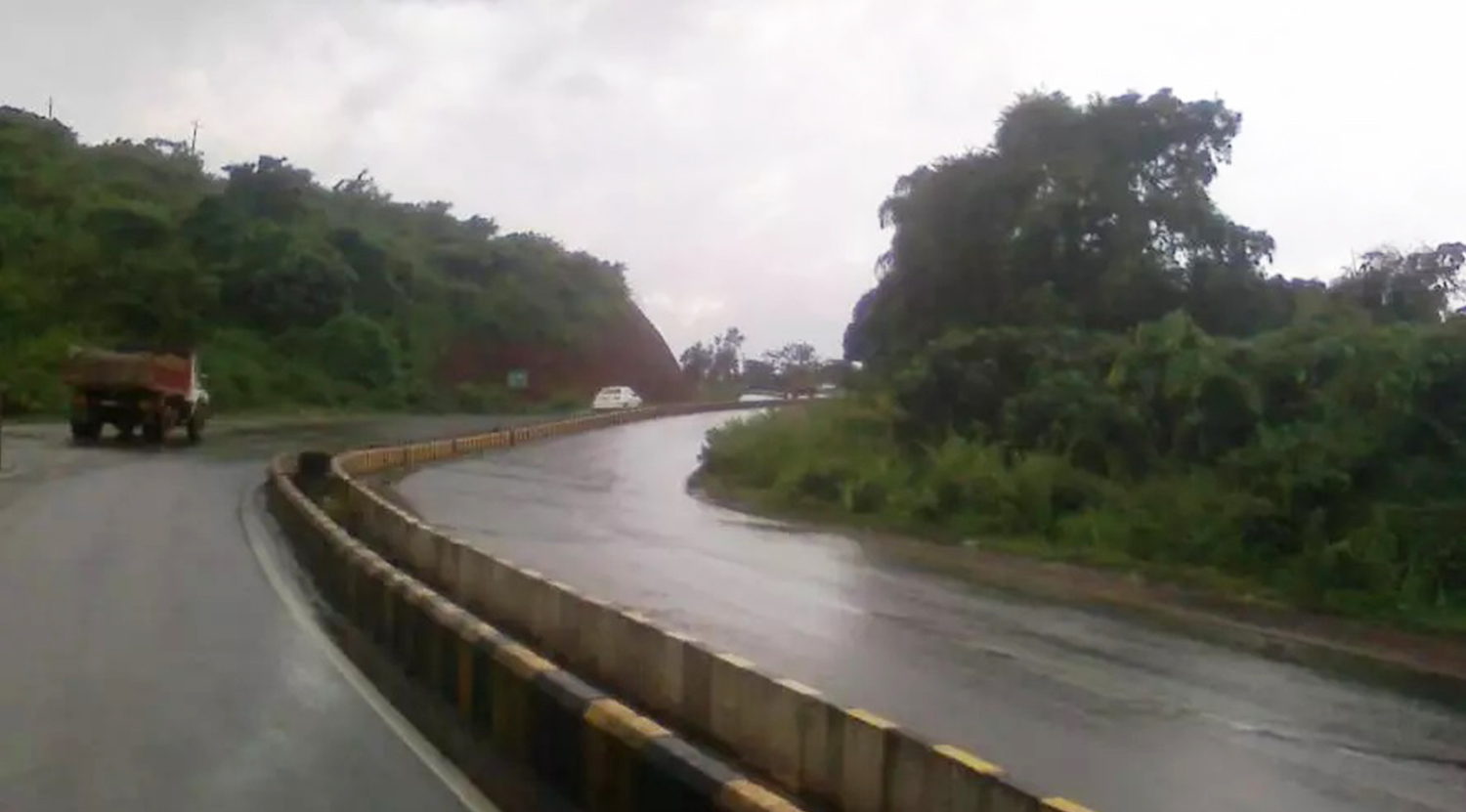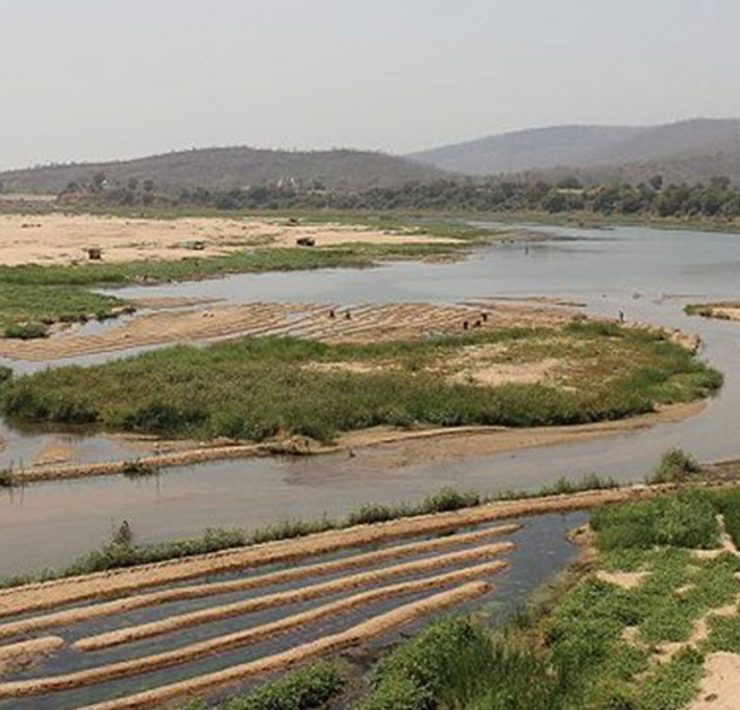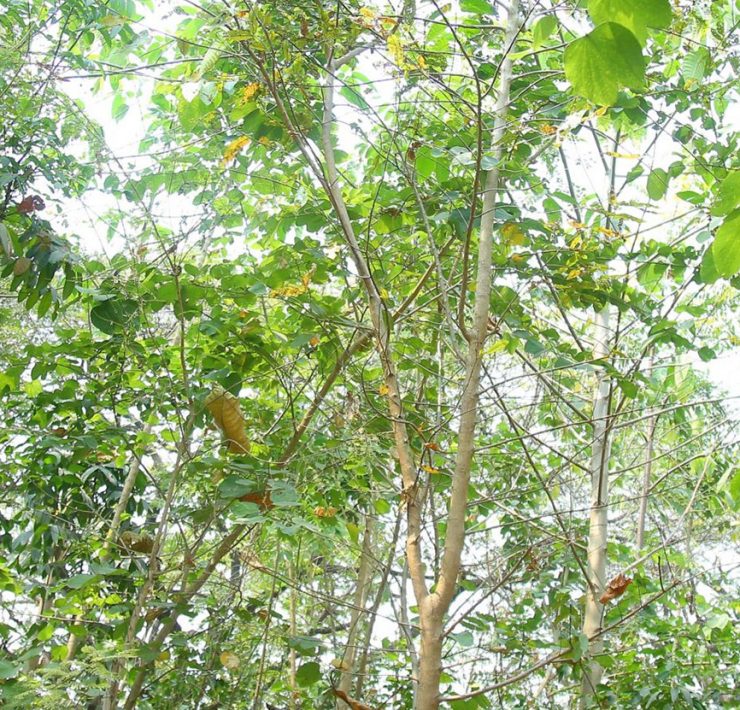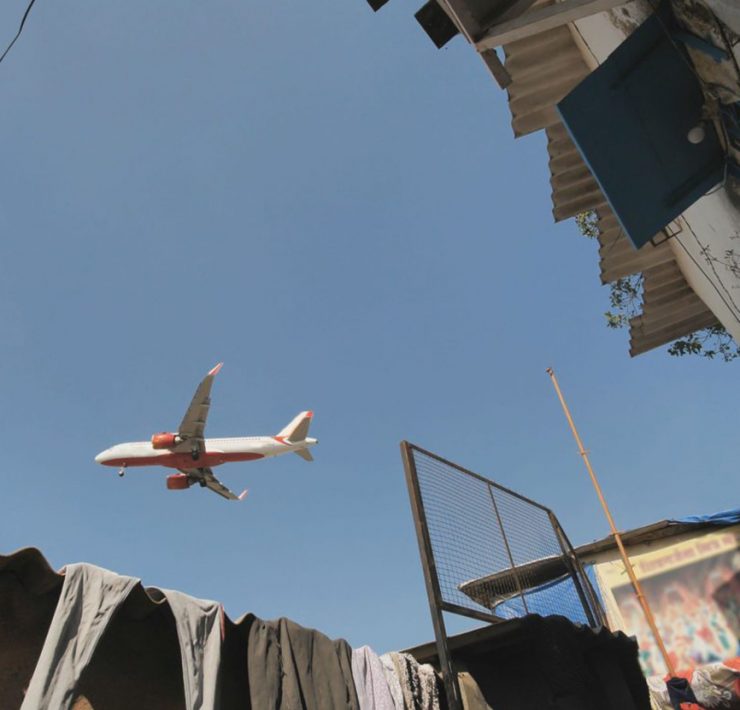Concerns Rise over Use of ‘Legal Loopholes’ for Coal Transport through Western Ghats
- Goans are protesting against infrastructure projects that will cut through protected areas in the Western Ghats and impact both the environment and lives of people.

Questions are being raised on whether loopholes in green laws are being exploited to push forth infrastructural projects to transport coal through the Western Ghats from Goa to Karnataka. In the recent past, numerous protests and agitations have rocked Goa with locals claiming that neither environment clearances were sought for these projects nor public consultations ever held.
The infrastructure projects include double-tracking of an existing railway line connecting the Mormugao Port in Goa with Hospet in Karnataka and widening of National Highway (NH) 4A which connects Panaji in Goa to Belagavi in Karnataka. It also includes a 400-kilovolt (kV) power transmission corridor from Dharwad in Karnataka to Xeldem in Goa. These projects are purportedly aimed at easing transportation of coal from the Mormugao Port in Goa to iron-ore rich areas of Karnataka where a number of steel plants are in the pipeline.
Work is simultaneously also underway to upgrade the Mormugao Port and construction of jetties across Zuari and Mandovi rivers to apparently handle more coal-laden ships. However, the maximum resistance from locals has been against the expansion of NH-4A, the double-tracking of the railway line and the 400-kV power transmission corridor, particularly because these linear projects will cut through the Bhagwan Mahaveer Wildlife Sanctuary and Mollem National Park, a protected area, and thereby affecting its flora and fauna.
“An assessment of the cumulative environmental impact of the three infrastructure projects on the local population of Goa as also on the ecology and wildlife of the Western Ghats was never conducted before the projects were cleared. Neither were public consultations held for any of the projects,” said Norma Alvares, legal adviser to Goa Foundation, an environmental monitoring group. “There is no environment impact assessment for the 400-kV high tension transmission line project though it will lead to the slaughter of more than one lakh trees in the forest. The highway expansion needs an environmental clearance but this has been bypassed by showing the project state-wise, each below 100 km. The Railways claim they do not need an environmental clearance,” she alleged.
Environment clearances were apparently not sought on grounds of certain exemptions that have been granted to linear projects by the central government. In 2013, the Congress-led United Progressive Alliance (UPA) government had granted exemption from environmental clearance to national highways less than 100 kilometers in length. The Union Ministry of Environment & Forests, as it was called under the erstwhile United Progressive Alliance (UPA) regime, had issued a notification on August 2013 making environmental clearance mandatory only for “expansion of National Highways greater than 100 km involving right of way or land acquisition greater than 40 m on existing alignments and 60 m on re-alignments or by-passes.”
Locals and environmental action groups claim the projects have been deliberately broken into smaller fragments for execution in order to avoid scoping under the Environment Impact Assessment (EIA) Notification, 2006. The existing two-lane 153-km-long NH-4A, which stretches from Panaji to Belagavi, was constructed by the Portuguese colonial government of Goa, much before enactment of post-Independence environmental laws in India and notification of wildlife sanctuaries. While 83 kms of the highway falls within Karnataka, the remaining 70 kms fall within the state of Goa. In Karnataka, work on the 83-km highway is being undertaken by the National Highway Authority of India (NHAI) while in Goa, the work has been undertaken by the state’s Public Works Department (PWD).
The doubling of the existing 342-km-long railway track between Hospet and Vasco-da-Gama had been sanctioned by the erstwhile UPA government in 2010-11 at a cost of approximately Rs 2,127 crore. The section of the project in Karnataka has since been nearly completed except for a 10-km stretch between Unkal and Hubballi, which is targeted for commissioning by March 2021.
When contacted, the South Western Railways informed NewsClick that approximately 70 kms of the railway track-doubling project falls in Goa. The entire 342-km inter-state package, that is, from Hospet to Vasco-da-Gama, is being developed in several packages. Out of these, one package transcends the inter-state boundaries of Goa and Karnataka, while the remaining two packages, that is, from Kollam to Madgaon and from Madgaon to Vasco-da-Gama, fall entirely within the political boundaries of Goa. Around 15 kilometers of the first package, which transcends inter-state boundaries, falls between Caranzole and Kollam within the state of Goa alone.
“No work whatsoever will be undertaken on the packages for which Environmental Clearances are required until such clearance is granted by the central government. An online application has already been filed with the Union Environment Ministry seeking Environment Clearance for the package in which Goa accounts for 15 kms from Caranzole to Kollam. The clearance is awaited,” Chief PRO of South Western Railways, E Vijaya told NewsClick. “An Environment Impact Assessment study for the entire project was earlier conducted through the Indian Institute of Science, Bengaluru. Nowhere was it recommended in the EIA report that the project should be dropped. Public consultations for the entire project were held in the year 2016. A joint filed inspection for the project was also conducted in the year 2017-18 which was attended by district administration, elected representatives and local governing bodies of the project-affected areas,” she said.
GOANS MIFFED WITH GOVT ACTIONS
Goans are protesting against the fact that no cumulative assessment study was ever conducted for the three linear projects. They are also miffed that forest clearance was granted by the state and central governments despite the fact that all three linear projects would cut through the Bhagwan Mahaveer Wildlife Sanctuary and Mollem National Park. An area of around 240 square kilometres was notified as Bhagwan Mahaveer Wildlife Sanctuary in the year 1969. The core area of this sanctuary, that is an area of around 107 square kilometres, was designated as the Mollem National Park in 1978. Apart from the railway track and national highway, around 3.5 km of the 400-kV transmission line will also cut through this protected area.
Forest clearances for the project were approved by the Goa State Board of Wildlife and recommended for clearance to the National Board of Wild Life (NBWL) in between the years 2016 and 2019. The Standing Committee of the NBWL, which is chaired by Union Environment Minister Prakash Javadekar, cleared the projects in quick succession. The project for doubling of the railway track was cleared in December 2019. The highway and transmission line projects, on the other hand, were cleared in a meeting held on April 7, 2020, at a time when there was a total lockdown enforced across the country in view of the Covid-19 pandemic.
The Goa Foundation has filed a Public Interest Litigation (PIL) in the Bombay High Court challenging clearances granted for the projects inside a wildlife sanctuary and a national park.
“Provisions [section 29 and Section 35(6)] of the Wildlife Protection Act, 1972 mandate that no destruction of wildlife or wildlife habitats within wildlife sanctuaries and National Parks unless such destruction, exploitation or removal is necessary for the improvement or better management of the wildlife,” it has been argued in the PIL.
A PIL filed earlier in the Karnataka High Court by Suresh Heblikar, noted Kannada filmmaker and environmentalist, and two others, challenging construction of the projects through dense forests of the Western Ghats, is pending for disposal. The high court has taken cognisance of the fact that environmental clearances for NH-4A expansion have been skipped on the ground that individual packages are less than 100 kms in length.
On February 24 this year, the bench hearing Heblikar’s PIL noted in its order: “The additional documents tendered today by the learned counsel appearing for the petitioners along with a memo shows that the length of NH-4A which is taken up for widening may be more than 100 Kilometers stretching over Karnataka and Goa. If that be so, it cannot be said that widening is undertaken for the length which is less than 100 Kilometers.”
In its subsequent order issued on 9 March 2020, the bench noted: “After considering the affidavit filed by NHAI, we expect the Union of India to take a clear stand whether environmental clearance is necessary for carrying out the work of widening of NH-4A.”
The 400-kV power transmission corridor is being executed by a private firm through a Special Purpose Vehicle named Goa-Tamnar Transmission Project Limited on the BOOM (Build, Own, Operate, Maintain) model on behalf of the Union Ministry of Power. Around 11.54 hectares of forest land have been diverted for the project within the wildlife sanctuary in Goa, for which environmental activists claim that one lakh trees have been felled. No Biodiversity Impact Assessment study was ever conducted for this project because, as per law, it does not involve an area of 50 hectares or more of a national park or a wildlife sanctuary.
Queries sent separately to the Union Ministry of Environment, Forests & Climate Change, the Union Ministry of Power and the Goa State Biodiversity Board to ascertain the veracity of the claims thCoat one lakh trees will be felled for the project are yet to elicit any response. This article will be updated as and when the responses are received.
Nevertheless, the Goa Foundation has cited an impact report prepared for the power transmission project by the state’s Deputy Conservator of Forests in its PIL which states: “Laying of transmission line in this PA [protected area] is going to cause disturbance in the landscape, disrupt rich biodiversity and further fragment habitat of an important wildlife refuge and corridor of the state.”
Concerns over Environmental Impact
There exists a sense of apprehension in Goa at present over the manner in which the projects are allegedly being pushed through. Adverse impacts that largescale transportation of coal would have upon the fragile ecology of the Western Ghats is being highlighted to members of the general public by citizens’ campaign groups like the Goyant Kollso Naka (we don’t want coal in Goa).
“Berths for coal transportation have already been leased out to mega corporates at Mormugao Port where approach channels are being deepened to enable navigation of coal-laden ships. The infrastructure projects are contrary to the economic and environment well-being of the people of Goa. Over the past 20 years, all political parties have supported corporates irrespective of the potential impacts of the infrastructure projects on lives and ecology,” said Abhijit Prabhudesai of Goyant Kollso Naka, a people’s movement against coal.
The state government has so far not taken a clear stand on whether the infrastructure projects are solely meant to transport coal from Goa to Karnataka, but has instead said that they are for ‘public interest’. Owing to relentless citizens’ protests against the infrastructure projects, including an overnight candlelight vigil, an online press conference was held by South Western Railways on 11 November. The conference conducted by PK Mishra, Additional General Manager of South Western Railways, was apparently aimed to dispel myths about the double-tracking project.
“When queried on [the] quantity of coal that will be transported, Shri Mishra stated that presently emphasis is being given for usage of environment-friendly sources of energy/resources for power generation. As a result, the use of coal is gradually reducing and share of non-conventional energy sources is gradually increasing,” states the press release issued at the end of the virtual conference.
Nevertheless, the issue remains to be settled on the manner in which environmental clearances have allegedly been bypassed for the projects through existing loopholes.
“Environment regulation is no longer being enforced to uphold the rule of law. What we see instead is flexibility of law that consistently reads down environmental safeguards to accommodate large industrial and infrastructure projects,” said Kanchi Kohli of the Delhi-based Center for Policy Research. “Breaking up of a project into smaller parts or separate components has been an old practice to play down impact assessment studies or public hearings. The difference is that the current regulatory landscape gives it legal legitimacy,” Kohli said.
This article first appeared on Newsclick on 10th December.










